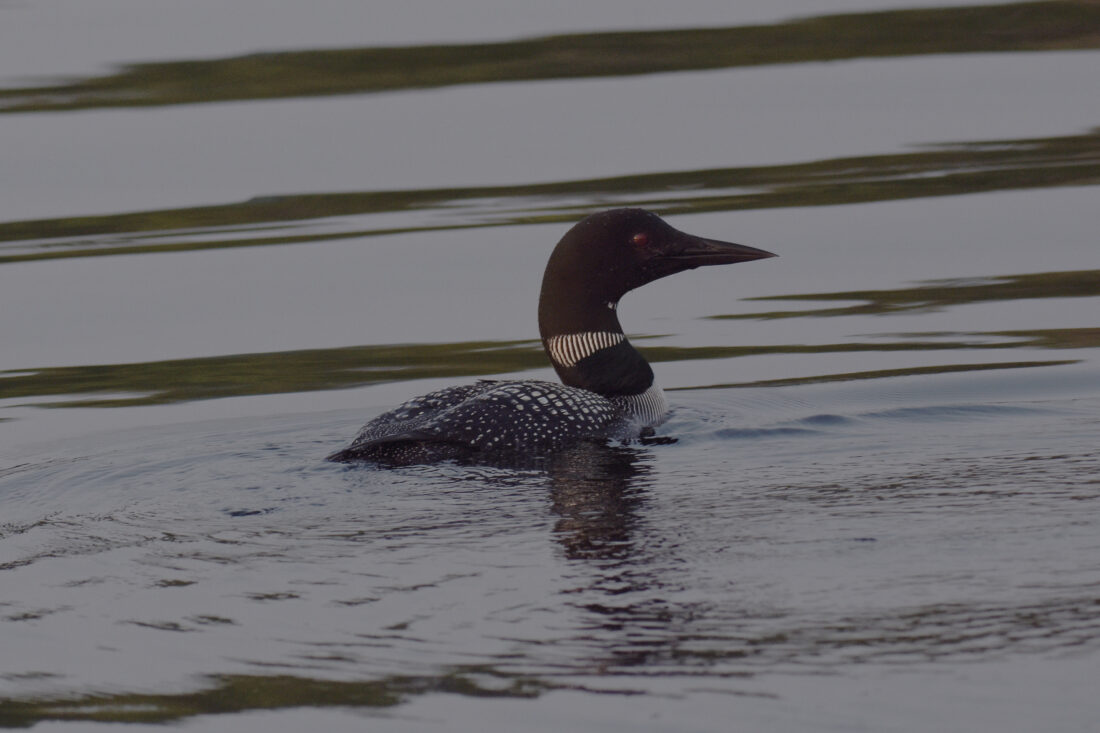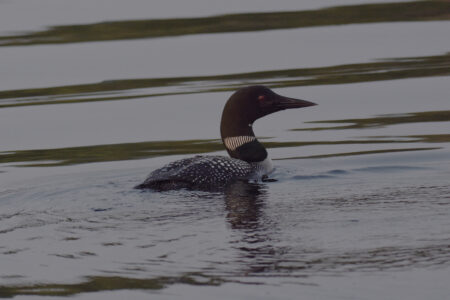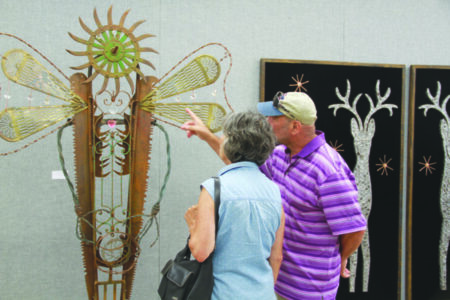Northwoods notebook: Loons do some fishing

Single loons and pairs seem to be back on Six Mile Lake, but all are adults. Betsy Bloom/Daily News photo
The loons put on a show this past Sunday at Six Mile Lake.
During a pontoon boat ride, two adults fishing repeatedly surfaced right alongside, despite our initial efforts to give them a wide berth. We shut down the motor and let them move away at their own pace before going on.
Seeing them brought mixed emotions, though, because these loons had no chick and might not even be the same pair that had the first successful nesting on Six Mile Lake in at least a decade earlier this summer.
I first spotted the chick June 20, riding on an adult’s back. Comparing it to photos on the Loon Preservation Committee’s website, https://loon.org, it looked to be perhaps no more than a week old.
The next Saturday, June 28, I saw it at a distance following an adult in the middle of the lake.
But by July 5, I could only find the adult pair in the same area where I’d first gotten a glimpse of the trio.
Being a long weekend for the Independence Day holiday, the lake had a lot of activity on the water, so I’d hoped the little one might be hiding in the weeds. But daily checks the next week turned up no sign of the chick. As July advanced, even the adults went missing.
Single loons and pairs now seem to be back on Six Mile Lake, yet all are adults. While the chick at this point would have feathers, it still would be grayish-brown, similar to the loon’s winter plumage.
By 10 to 11 weeks, loon chicks are grown enough to take practice flights and catch most of their own food. One parent may move on at that point, heading for wintering areas. The other partner may follow suit when the fledgling is three months old and fully flying, but young loons usually linger where they were hatched for several weeks, perhaps even into early winter if conditions allow.
So it would still be around if alive. I have to conclude the nesting pair lost their chick in those early weeks, to predation — bald eagles are a well-documented threat –î or some other factor.
While depressing, this is reality. The statistics can be pretty grim for wildlife mortality in the first year. Prey species tend to crank out more offspring by necessity to offset those picked off, but predators endure their fair share of losses and poor years as well.
So deer have twins, even triplets. Songbirds such as robins might try to nest two, even three times in a summer. Our eastern phoebes regularly rear two broods.
Loons tend to fall between predator and prey on the pecking order. They produce one to two chicks on average and will have only one brood a year, though if a nest fails due to high water or other factors a pair might attempt another hatch if not too late in a season.
But the average loon pair successfully raises just one chick to fledgling age every two years, according to the Loon Preservation Committee. They offset that low reproduction rate by living –î and nesting — a long time. The oldest loon on record –Fe, at least 39 years old — had two chicks this season at the Seney National Wildlife Refuge in the Upper Peninsula that are her 41st and 42nd documented offspring. Researchers believe her actual reproductive tally could be in the 50s, as she was already breeding when she was banded in 1990.
So perhaps the pair will try again next year. Or another pair will decide Six Mile Lake looks promising.
Betsy Bloom can be reached at 906-774-2772, ext. 85240, or bbloom@ironmountaindailynews.com.




